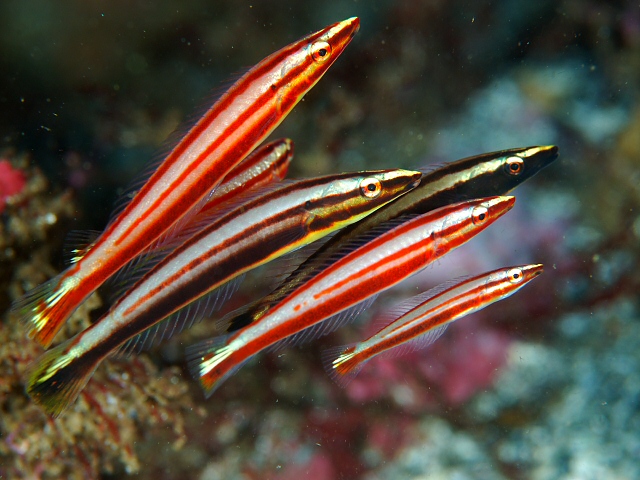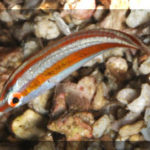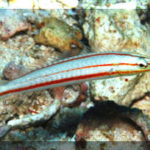 Our Fish spotlight for today is the Candycane Wrasse, as it is commonly called when collected as a juvenile.
Our Fish spotlight for today is the Candycane Wrasse, as it is commonly called when collected as a juvenile.
Like many fish species, the Candycane wrasse changes in both coloration and body shape throughout it’s lifespan. The name “candycane” was given to highlight the white and red strips present during the fishes juvenile stage of development. However, the fish undergoes such a dramatic shift in appearance on the way to becoming an adult that the name “Candycane” is often dropped and the fish is referred to as a Pastel Ring Wrasse. As the fish matures to adulthood, these wrasse drastically changes colors. Instead of the white and red horizontal stripes, the candycane wrasse turns green and blue, with a large faded yellow and black vertical bar just the pectoral fin. Regardless of the common names associated with this fish, the latin nomenclature obviously remains the same; Hologymnosus doliatus (Lacepede 1801).
Hologymnosus doliatus is found in the Indo-Pacific east to the Line Islands. Hologymnosus species are found in Indo-Pacific waters, in variable depths ranging from 20 to nearly 100 feet. In the wild adults grow to 18 inches long but they are rarely seen exceeding 12 inches in an aquarium. Fortunately, these fish are usually collected in the juvenile / candycane appearance stage of their development. Below is a whole series, a very young juvenile, initial/juvenile phase, initial and terminal phase individuals in Raja Ampat and Fiji.
- photo credit: Wet Web Media
- photo credit: Wet Web Media
- photo credit: Wet Web Media
- photo credit: Wet Web Media
- photo credit: Wet Web Media
- photo credit: Wet Web Media
- photo credit: Wet Web Media
In the wild, Juvenile wrasses will hunt for typical foods like hard-shelled crustaceans and copepods. In the aquarium they will eat copepods like Dr. G’s copepod max as well as brine shrimp and mysis. As they mature into adulthood these fish will consume most any fish or mobile invertebrate it can capture and swallow. With that said, this fish is better suited in a reef tank as a juvenile or in a fish only tank as an adult.












